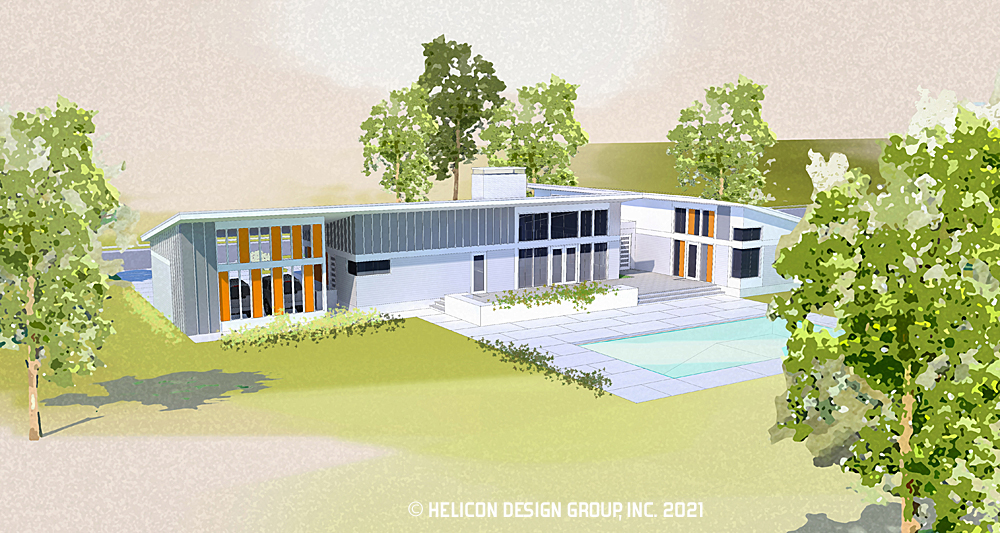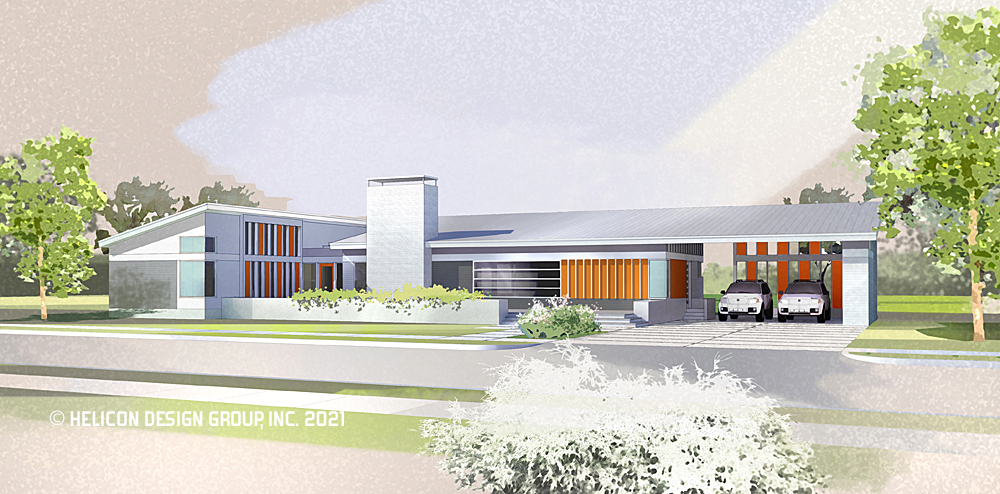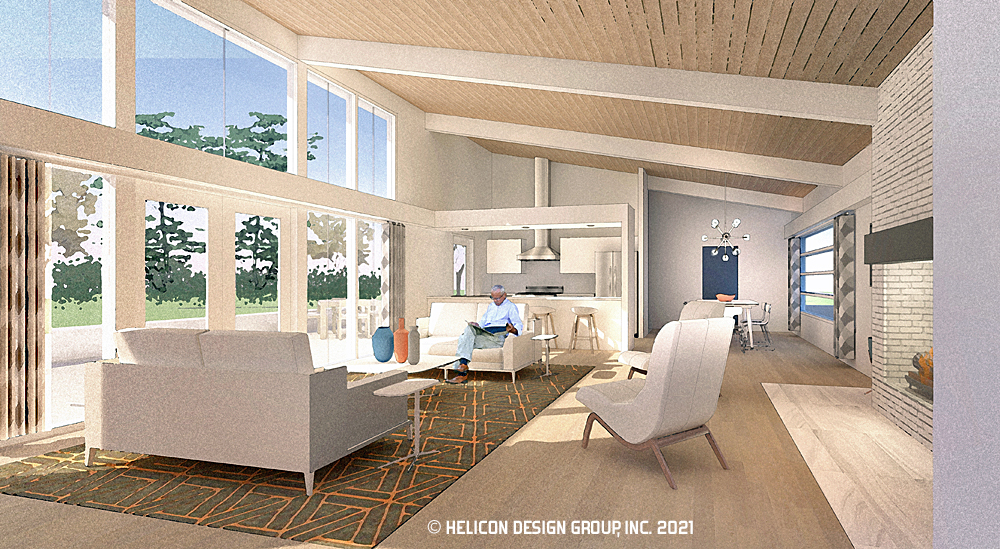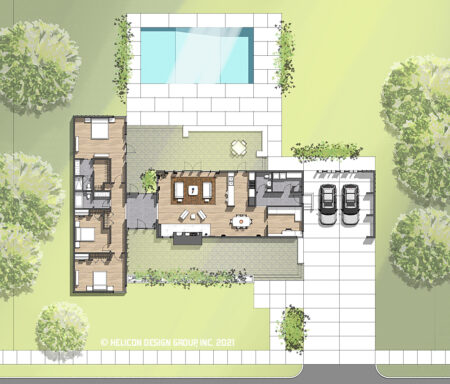
Maybe the one upside of the pandemic is the time it has provided all of us. In our case, it gave us the opportunity to dive into creative areas that were long demoted to lower on our list.
We dusted off our long-time love of Mid-Century Modern — to us, one of architecture’s more optimistic residential moments.
2020 — THE PLAGUE YEAR — GOT US THINKING ABOUT OPTIMISM; THE SCARCITY OF IT, THE NEED FOR IT.
Post-war modernism didn’t encounter a situation or domestic problem that couldn’t be solved by design, often in the most cheery, hipster way.
Floor plans, like society, became more open and flowing — even if imperfectly — but eager to throw off the shackles of architecture and domestic culture that had them cloistered in wallpapered rooms and pre-defined roles.
To us, that inherent spirit in modernism is maybe more timely than ever. Innovation will be the way out of many of our problems, and it moved us to revisit forward-looking optimism of Eichler and other like-minded mid-century developers that brought open-plan living and modern materials to a wide consumer audience.
The model here, the “Surveyor,” is the first of six of our projects that average 2,500 square feet or less. (Others will roll out soon.) They employ old-school post and beam construction with amenities the current market demands.
Since they are built digitally in our portfolio at the moment, it’s a place we’re calling Heliconia for now. These models have lower-pitched roofs which, if clad in the standing seam illustrated here, will work for northern climates.
The throw-back carports push back on the American garage as an ersatz rummage room and an enabler of acquisition consumer culture.
That’s also in response to another lesson the pandemic brought — we all need less stuff.


